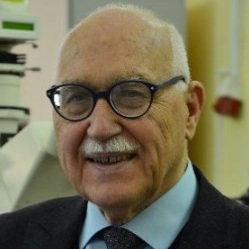Advanced Materials for Biophotonics Applications (Volume II)
A special issue of Materials (ISSN 1996-1944). This special issue belongs to the section "Optical and Photonic Materials".
Deadline for manuscript submissions: closed (20 October 2023) | Viewed by 1042
Special Issue Editors
Interests: biophotonics; biomedical optics; fiber-optic sensors; optical sensors; low coherent interferometry
Special Issues, Collections and Topics in MDPI journals
2. Laboratory of Laser Molecular Imaging and Machine Learning, Tomsk State University, Tomsk, Russia
3. А.N. Bach Institute of Biochemistry, FRC “Fundamentals of Biotechnology”, Moscow, Russia
Interests: biological and medical physics; biophotonics; biomaterials, laser spectroscopy; laser and optical systems; optical and laser measurements; nanobiophotonics; terahertz dielectric spectroscopy and microscopy; LIBS; phototherapy
Special Issues, Collections and Topics in MDPI journals
Special Issue Information
Dear Colleagues,
Biophotonics is the science of how light interacts with biological objects such as tissues, cells, and organisms. Recently, new materials have played an important role in creating new, exciting areas of biophotonics. It can be noted that progress in materials science has a strong influence on the ever-increasing progress in biophotonics. Thanks to the use of new materials, new biosensors are being created, including implantable ones, optical imaging systems and measuring devices for testing diseases. Another group of materials used in biophotonics research is materials for fabricating tissue phantoms. This area of knowledge and technology continues to develop, and providing us with increasingly perfect tissue phantoms, which have similar parameters to real objects.
In addition, advances in the study of optical and structural properties of biological tissues and cells allow for the creation of new materials, with applications not only in biology and medicine, but also in other areas. Thanks to these innovative materials, new devices and biophotonics technologies are emerging.
Clearly, the relationship between biophotonics and materials is strong and organic, and we can observe that both biophotonics and material sciences mutually enrich each other. This leads to the creation of new solutions, leading to a better understanding of nature and a higher quality of life.
Prof. Dr. Malgorzata Szczerska
Prof. Dr. Valery V. Tuchin
Guest Editors
Manuscript Submission Information
Manuscripts should be submitted online at www.mdpi.com by registering and logging in to this website. Once you are registered, click here to go to the submission form. Manuscripts can be submitted until the deadline. All submissions that pass pre-check are peer-reviewed. Accepted papers will be published continuously in the journal (as soon as accepted) and will be listed together on the special issue website. Research articles, review articles as well as short communications are invited. For planned papers, a title and short abstract (about 100 words) can be sent to the Editorial Office for announcement on this website.
Submitted manuscripts should not have been published previously, nor be under consideration for publication elsewhere (except conference proceedings papers). All manuscripts are thoroughly refereed through a single-blind peer-review process. A guide for authors and other relevant information for submission of manuscripts is available on the Instructions for Authors page. Materials is an international peer-reviewed open access semimonthly journal published by MDPI.
Please visit the Instructions for Authors page before submitting a manuscript. The Article Processing Charge (APC) for publication in this open access journal is 2600 CHF (Swiss Francs). Submitted papers should be well formatted and use good English. Authors may use MDPI's English editing service prior to publication or during author revisions.
Keywords
- materials for active optical elements
- materials for passive optical elements
- bioinspired materials
- biomimicking materials
- nanostructured materials for imaging and sensing
- tissue optical and structural properties
- tissue mechanical and acoustic properties
- implantable devices
- magnetic materials
- molecular diffusion in tissues and biomaterials
- degradation of biomaterials







